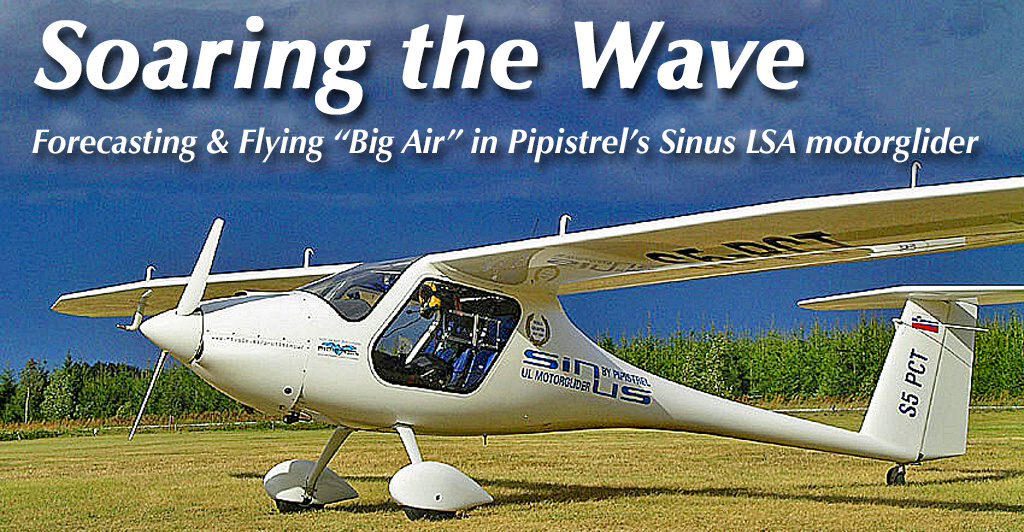
Probably like a lot of you, I enjoy different kinds of flying but if asked to state one favorite, it’s an easy question to answer. I’m a great enthusiast of soaring flight. Over decades of sampling a large number of aircraft of every description, I’m still drawn to a machine, which lacking any kind of powerplant, relies on the performance of the design and the skill of the pilot to stay aloft. I remain fascinated with locating rising columns of heated air. Circle well enough into one of these invisible thermals and you may be rewarded with an invigorating sensation of lift, of riding the swirling airmass thousands of feet into the air …silently. It’s mesmerizing to observe the ground fall away as you are propelled higher and higher. You may never have felt such thing and you may be hesitant about launching into the air in an aircraft that will allow only one approach and landing per flight; no exceptions.


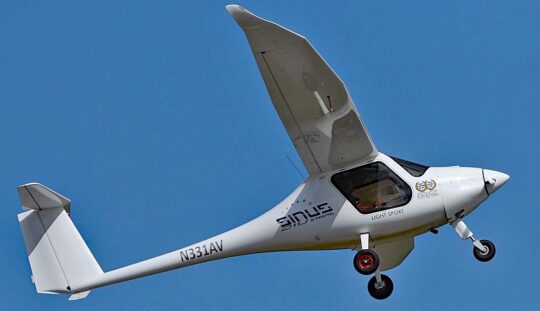 I'm a great enthusiast of soaring flight. Over decades of sampling a large number of aircraft of every description, I'm still drawn to a machine, which lacking any kind of powerplant, relies on the performance of the design and the skill of the pilot to stay aloft. I remain fascinated with locating rising columns of heated air. Circle well enough into one of these invisible thermals and you may be rewarded with an invigorating sensation of lift, of riding the swirling airmass thousands of feet into the air …silently. It's mesmerizing to observe the ground fall away as you are propelled higher and higher.
You may never have felt such thing and you may be hesitant about launching into the air in an aircraft that will allow only one approach and landing per flight; no exceptions. However, for those entranced by manipulating wisps of air to rise upward, a machine like Pipistrel's Sinus is a thing of beauty.
I'm a great enthusiast of soaring flight. Over decades of sampling a large number of aircraft of every description, I'm still drawn to a machine, which lacking any kind of powerplant, relies on the performance of the design and the skill of the pilot to stay aloft. I remain fascinated with locating rising columns of heated air. Circle well enough into one of these invisible thermals and you may be rewarded with an invigorating sensation of lift, of riding the swirling airmass thousands of feet into the air …silently. It's mesmerizing to observe the ground fall away as you are propelled higher and higher.
You may never have felt such thing and you may be hesitant about launching into the air in an aircraft that will allow only one approach and landing per flight; no exceptions. However, for those entranced by manipulating wisps of air to rise upward, a machine like Pipistrel's Sinus is a thing of beauty.
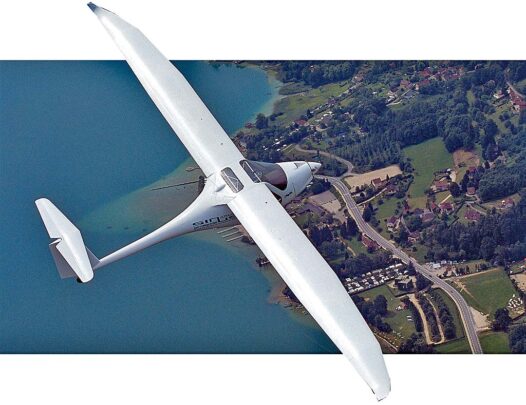 Though awkwardly named, to English speakers at least, Sinus boasts long and slender but very hard-working wings that permit this SLSA motorglider to glide 27:1, giving the ability to reach more than 10 miles from only 2,000 feet above ground (assuming no lift or sink). Even if you don't care about soaring, a glide path that flat can get you to a safe landing in many more situations.
Want to learn more? Let's take a sample soaring flight. Even better, let's investigate wave soaring.
Though awkwardly named, to English speakers at least, Sinus boasts long and slender but very hard-working wings that permit this SLSA motorglider to glide 27:1, giving the ability to reach more than 10 miles from only 2,000 feet above ground (assuming no lift or sink). Even if you don't care about soaring, a glide path that flat can get you to a safe landing in many more situations.
Want to learn more? Let's take a sample soaring flight. Even better, let's investigate wave soaring.
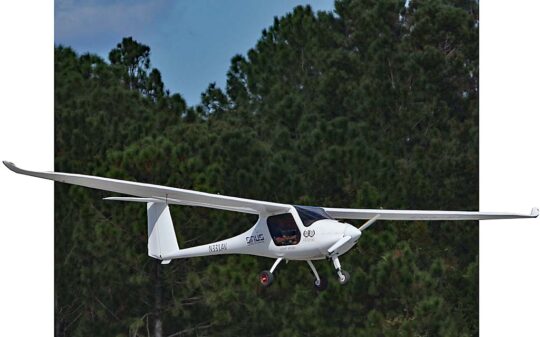 You can
You can 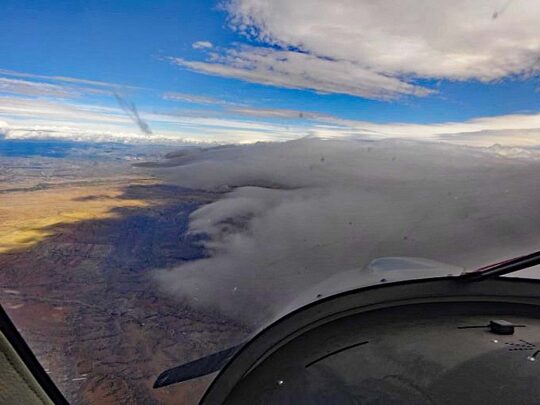 Roger wrote, "A local glider pilot, John Wahl, has been forecasting mountain wave for the Moriarty, New Mexico area but never getting much real feedback as to the accuracy of his predictions." Mountain waves form when moving air rises over mountainous terrain. As the air rushes up the slope, layers above repeat the lift. Upper air is pushed aloft by the lower atmosphere climbing a mountain's windward side
Roger wrote, "A local glider pilot, John Wahl, has been forecasting mountain wave for the Moriarty, New Mexico area but never getting much real feedback as to the accuracy of his predictions." Mountain waves form when moving air rises over mountainous terrain. As the air rushes up the slope, layers above repeat the lift. Upper air is pushed aloft by the lower atmosphere climbing a mountain's windward side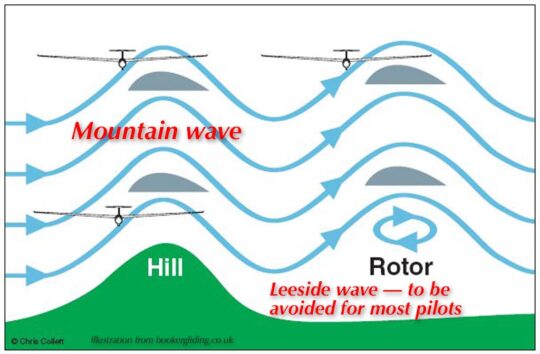 Robert continues, "In late October 2021, he forecast wave for a Saturday so I borrowed Hugh Bivin's Sinus, N21PX, and took John along to see if the wave would be as forecast. We had his plots of where it should start and end geographically. We had oxygen, a data logger, warm clothes, and a sense of adventure.
"We took off about 10:15 AM and climbed west-northwest under Rotax power. Our home field elevation is 6,200 feet.
"The orientation of the wind aloft was not the best for wave to form. An ideal wind direction is 260 to 280 degrees so as to be perpendicular to the Sandia mountains, which rise to 10,500 feet. The wave was forecast to be at the northern end of the Sandia range, and be at an angle to the mountains. Wind aloft was about 230 degrees, not ideal by any means. This would be a good test of John's forecasting method.
Robert continues, "In late October 2021, he forecast wave for a Saturday so I borrowed Hugh Bivin's Sinus, N21PX, and took John along to see if the wave would be as forecast. We had his plots of where it should start and end geographically. We had oxygen, a data logger, warm clothes, and a sense of adventure.
"We took off about 10:15 AM and climbed west-northwest under Rotax power. Our home field elevation is 6,200 feet.
"The orientation of the wind aloft was not the best for wave to form. An ideal wind direction is 260 to 280 degrees so as to be perpendicular to the Sandia mountains, which rise to 10,500 feet. The wave was forecast to be at the northern end of the Sandia range, and be at an angle to the mountains. Wind aloft was about 230 degrees, not ideal by any means. This would be a good test of John's forecasting method.
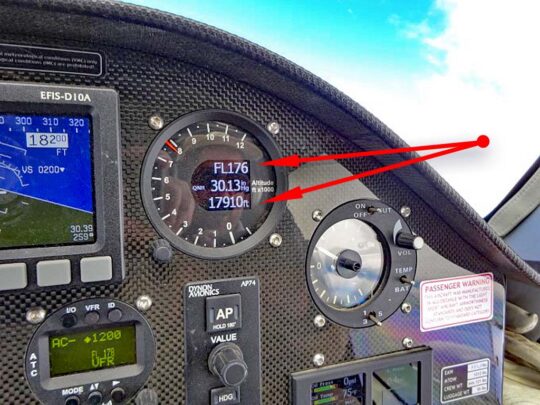 "We saw a line of clouds had formed along the forecasted direction. We got to the upwind side about 15 miles west of Moriarty and turned to run parallel to it. These were the roll clouds [sometimes associated with wave conditions] but really did not look much like a traditional roll cloud. They were just a line of not very tall cumulus. But we started to see an increased climb rate some distance upwind of them. We were about 8,500 feet above sea level. I slowly brought the power to idle but we did not climb, so I returned back to climb thrust. A short time later I tried that again and we found ourselves climbing with idle power. I shut off the motor and feathered the prop. We were still climbing! It became very quiet.
"We continued on a north-northwest track, climbing modestly at about 1.5 to 2 knots, about 150-200 feet per minute. The forecast was for stronger lift ahead so we continued. Sure enough, just where John had forecast stronger conditions, we found that. The best climb rate we saw was 3 knots or about 300 feet per minute. We stopped the climb at 17,910 feet. We could have gone higher, I think to at least 20,000 feet, but the wave window was not open.
"We saw a line of clouds had formed along the forecasted direction. We got to the upwind side about 15 miles west of Moriarty and turned to run parallel to it. These were the roll clouds [sometimes associated with wave conditions] but really did not look much like a traditional roll cloud. They were just a line of not very tall cumulus. But we started to see an increased climb rate some distance upwind of them. We were about 8,500 feet above sea level. I slowly brought the power to idle but we did not climb, so I returned back to climb thrust. A short time later I tried that again and we found ourselves climbing with idle power. I shut off the motor and feathered the prop. We were still climbing! It became very quiet.
"We continued on a north-northwest track, climbing modestly at about 1.5 to 2 knots, about 150-200 feet per minute. The forecast was for stronger lift ahead so we continued. Sure enough, just where John had forecast stronger conditions, we found that. The best climb rate we saw was 3 knots or about 300 feet per minute. We stopped the climb at 17,910 feet. We could have gone higher, I think to at least 20,000 feet, but the wave window was not open.
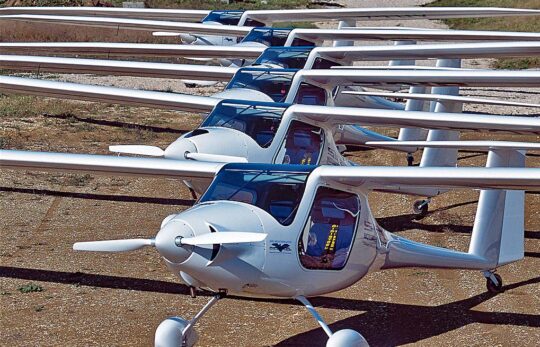 "John was very happy, as was I. His forecast was validated under unusual conditions.
"We turned around and more or less followed our track back, still in wave, but staying well below 18,000 feet.
"The view was fantastic. As we flew out of the region of better lift we started a long slow decent and turned slightly to the southeast toward home.
"We landed after 1.25 hours of flight time, about an hour of which was power off. Naturally, the landing was done power off. As we cleared the runway I un-feathered the prop, started the motor and taxied to the hangar.
"John was very happy, as was I. His forecast was validated under unusual conditions.
"We turned around and more or less followed our track back, still in wave, but staying well below 18,000 feet.
"The view was fantastic. As we flew out of the region of better lift we started a long slow decent and turned slightly to the southeast toward home.
"We landed after 1.25 hours of flight time, about an hour of which was power off. Naturally, the landing was done power off. As we cleared the runway I un-feathered the prop, started the motor and taxied to the hangar.
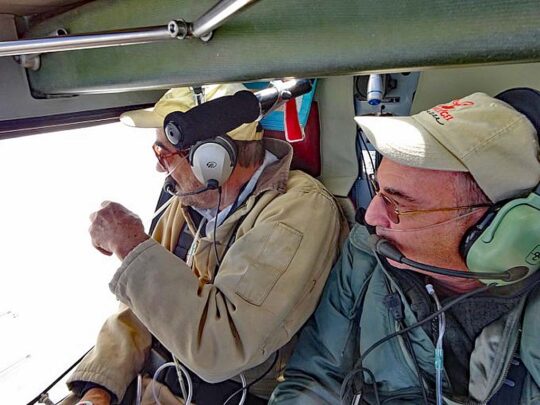 "This flight could not have been done except in a motorglider, and the fact it was done in a Sinus made it all the more interesting. I figured we used about 3 gallons of fuel. The flight was not just for fun but to validate John's forecast model; so there was a strong sense of accomplishment and satisfaction.
"This illustrates the potential of research that can be done in a touring type motorglider. Because both pilot and researcher were side by side, coordinating the flight path was easy (unpowered sailplanes almost always have tandem seating). We were able to motor right to the area we wanted to explore, and, of course. always had a safety out with the motor.
"All in all, it was a flight to remember for the research, fellowship, and the fun of it."
—Robert Mudd, October 2021
"This flight could not have been done except in a motorglider, and the fact it was done in a Sinus made it all the more interesting. I figured we used about 3 gallons of fuel. The flight was not just for fun but to validate John's forecast model; so there was a strong sense of accomplishment and satisfaction.
"This illustrates the potential of research that can be done in a touring type motorglider. Because both pilot and researcher were side by side, coordinating the flight path was easy (unpowered sailplanes almost always have tandem seating). We were able to motor right to the area we wanted to explore, and, of course. always had a safety out with the motor.
"All in all, it was a flight to remember for the research, fellowship, and the fun of it."
—Robert Mudd, October 2021
 Here's our video with Rand Vollmer. Hear from a Sinus expert about this high performing LSA motorglider.
https://youtu.be/zrRtAam5-zk
Here's our video with Rand Vollmer. Hear from a Sinus expert about this high performing LSA motorglider.
https://youtu.be/zrRtAam5-zk
 Tuesday, I hiked up to the north side, where the main displays are located. Most of the higher end Light-Sport Aircraft are located in this high-traffic area. Several LSA companies have jockeyed for years to find what they consider to be the optimal location for their exhibit. Being near the main foot-traffic road is very alluring to vendors.
In almost two decades of Light-Sport Aircraft (the then-new rule was announced at AirVenture 2004), LSA have integrated themselves into mainstream aircraft manufacturing …and not simply because of the aircraft offered. As late-night TV ads once said, "There's more!"
Tuesday, I hiked up to the north side, where the main displays are located. Most of the higher end Light-Sport Aircraft are located in this high-traffic area. Several LSA companies have jockeyed for years to find what they consider to be the optimal location for their exhibit. Being near the main foot-traffic road is very alluring to vendors.
In almost two decades of Light-Sport Aircraft (the then-new rule was announced at AirVenture 2004), LSA have integrated themselves into mainstream aircraft manufacturing …and not simply because of the aircraft offered. As late-night TV ads once said, "There's more!"
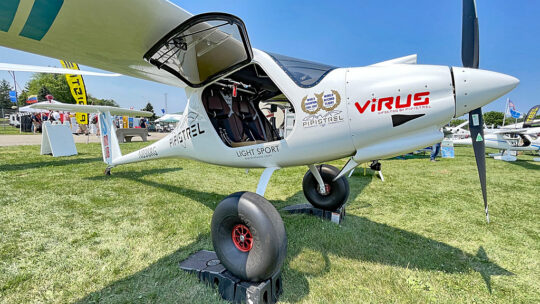
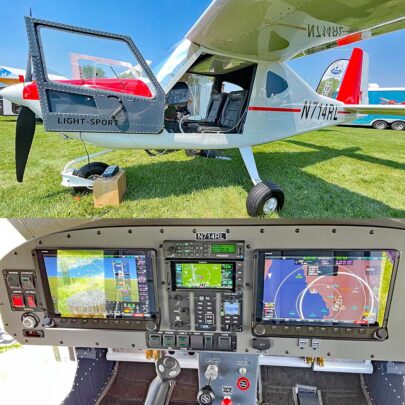 VASHON
VASHON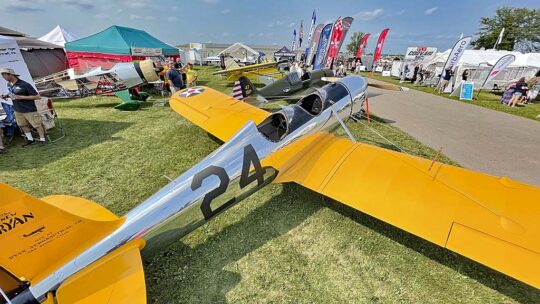 And, speaking of area movements…
And, speaking of area movements…
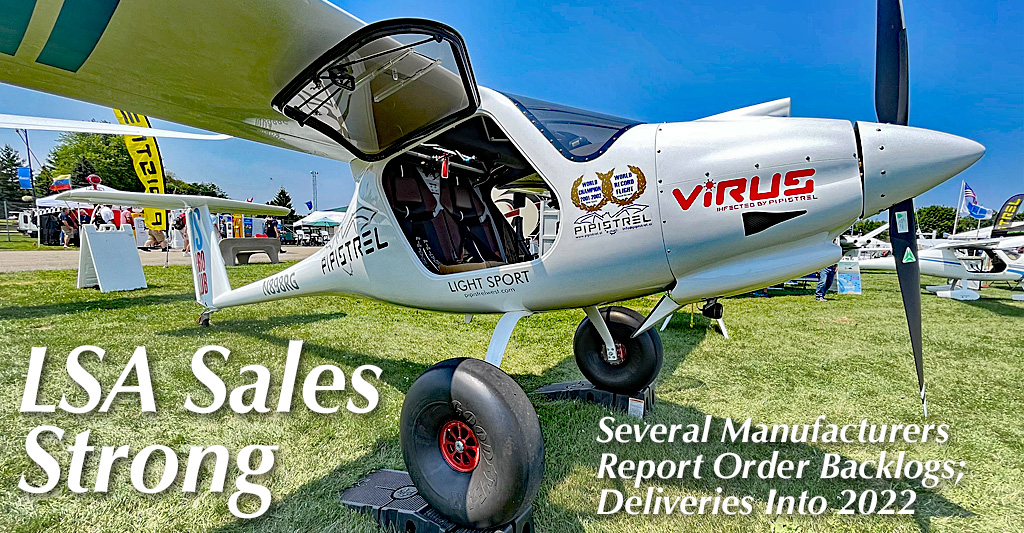
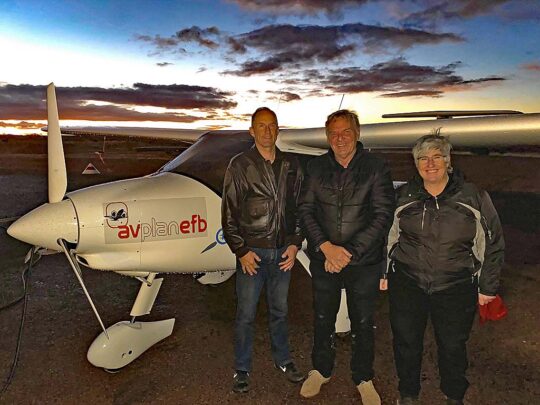 "We are thrilled to announce that this afternoon we achieved a World Endurance Record for an electric aircraft, breaking the previous mark set in Germany last year." (Note: Official recognition always takes more time.)
Pipistrel distributor Michael Coates, wrote, "South Australian-based Eyre to There Aviation … Flying a Pipistrel Alpha Electro plane, arrived in Port Augusta late yesterday (Friday June 25) after breaking the previous mark of 750 kilometers on the leg between Shoalwater Point Station and Whyalla."
Lead by Eyre to There Aviation Managing Director, Barrie Rogers, the team will continue to Adelaide aiming to fly 1,350 kilometers by the end of the journey.
"We are thrilled to announce that this afternoon we achieved a World Endurance Record for an electric aircraft, breaking the previous mark set in Germany last year." (Note: Official recognition always takes more time.)
Pipistrel distributor Michael Coates, wrote, "South Australian-based Eyre to There Aviation … Flying a Pipistrel Alpha Electro plane, arrived in Port Augusta late yesterday (Friday June 25) after breaking the previous mark of 750 kilometers on the leg between Shoalwater Point Station and Whyalla."
Lead by Eyre to There Aviation Managing Director, Barrie Rogers, the team will continue to Adelaide aiming to fly 1,350 kilometers by the end of the journey.
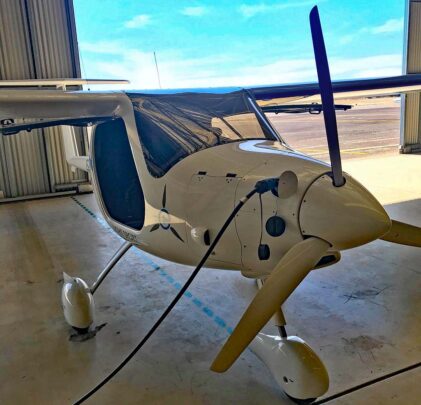 Barrie reported he and his team battled strong winds and rain as well as below zero morning temperatures to achieve the record. (Australian's seasons are roughly reversed from America's; this is not summer in Australia.)
“It’s been a mammoth effort by everyone involved to achieve this incredible feat," Barrie said. "The weather hasn’t exactly been on our side. We had ice on the wings one morning and were grounded in Port Lincoln due to an intense low pressure system.” One of the criticisms leveled at battery power is a loss of energy in cold conditions so the Eyre to There has been doing additional proving of the propulsion concept.
“On the plus side, the aircraft and the recharging systems have held up incredibly well, said Barrie. "It has gone a long way to proving the endurance and reliability of the Pipistrel Alpha Electro plane."
“Because we can only fly about 125 kilometers (78 miles) before having to recharge, we’ve been landing in some pretty remote locations."
As reported earlier, Barrie said Pipistrel Alpha Electro is the first and only serially-produced electric aircraft currently approved in Australia for flight training by the Civil Aviation Safety Authority (Australia's FAA counterpart).
Barrie reported he and his team battled strong winds and rain as well as below zero morning temperatures to achieve the record. (Australian's seasons are roughly reversed from America's; this is not summer in Australia.)
“It’s been a mammoth effort by everyone involved to achieve this incredible feat," Barrie said. "The weather hasn’t exactly been on our side. We had ice on the wings one morning and were grounded in Port Lincoln due to an intense low pressure system.” One of the criticisms leveled at battery power is a loss of energy in cold conditions so the Eyre to There has been doing additional proving of the propulsion concept.
“On the plus side, the aircraft and the recharging systems have held up incredibly well, said Barrie. "It has gone a long way to proving the endurance and reliability of the Pipistrel Alpha Electro plane."
“Because we can only fly about 125 kilometers (78 miles) before having to recharge, we’ve been landing in some pretty remote locations."
As reported earlier, Barrie said Pipistrel Alpha Electro is the first and only serially-produced electric aircraft currently approved in Australia for flight training by the Civil Aviation Safety Authority (Australia's FAA counterpart).
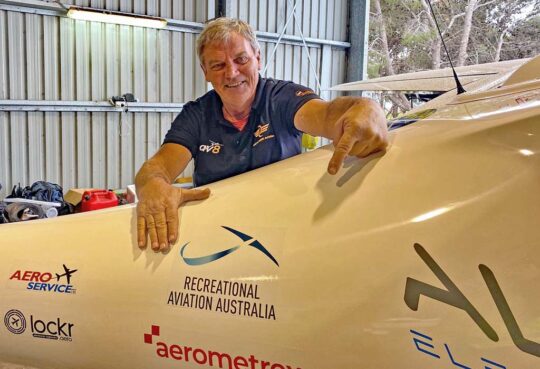
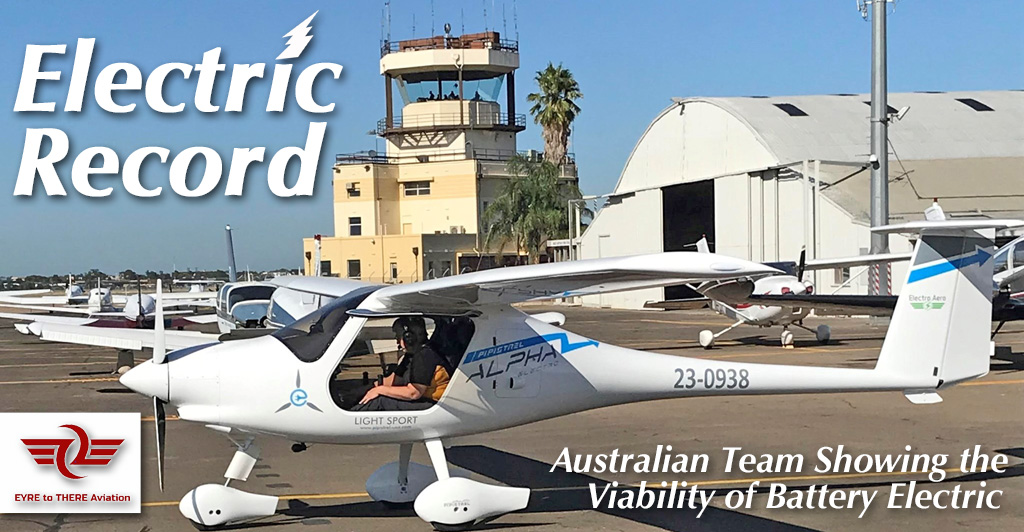
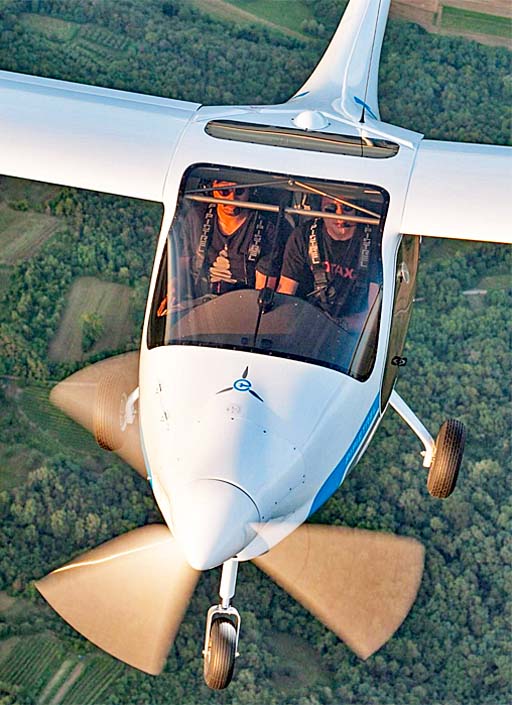 Article
Article 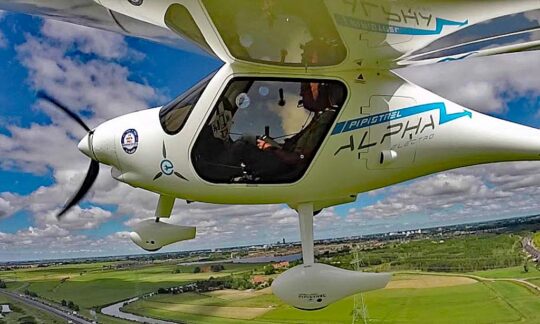
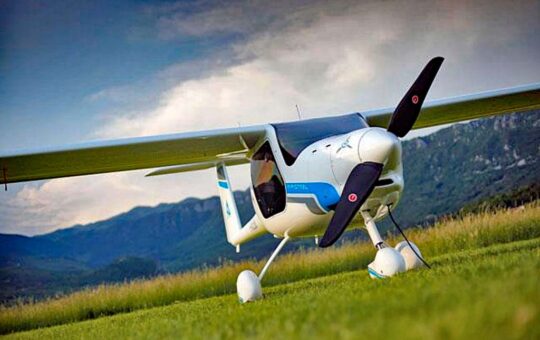
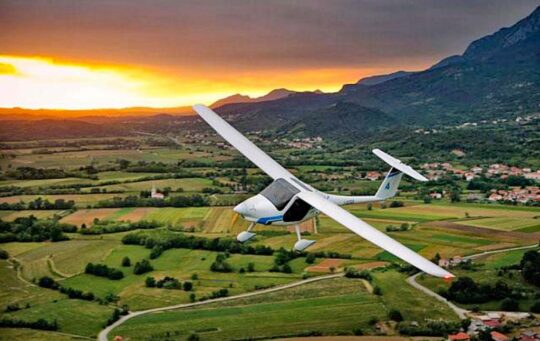 Let's be fair: Electric airplanes are relatively new and they will only get better. It is not reasonable to expect them to perform equally with fossil-fuel-powered aircraft that have been developed over many decades and with billions of dollars invested to help them achieve the high state-of-the-art they possess today.
Yet what this observes once again is that batteries are the weak link in the electric propulsion chain. Energy contained in batteries is a small fraction of that contained in a similar volume or weight of gasoline. That gap is narrowing but the pace seems glacial compared to forecasts of electric enthusiasts. Battery improvements of a few percentage points per year means decades before batteries match fossil fuel in energy per pound.
Give batteries some magical breakthrough to equal fossil fuel energy and the betting will end. Electric propulsion will push out fossil engines quickly — but that day is not here now. It may be years in the future.
Let's be fair: Electric airplanes are relatively new and they will only get better. It is not reasonable to expect them to perform equally with fossil-fuel-powered aircraft that have been developed over many decades and with billions of dollars invested to help them achieve the high state-of-the-art they possess today.
Yet what this observes once again is that batteries are the weak link in the electric propulsion chain. Energy contained in batteries is a small fraction of that contained in a similar volume or weight of gasoline. That gap is narrowing but the pace seems glacial compared to forecasts of electric enthusiasts. Battery improvements of a few percentage points per year means decades before batteries match fossil fuel in energy per pound.
Give batteries some magical breakthrough to equal fossil fuel energy and the betting will end. Electric propulsion will push out fossil engines quickly — but that day is not here now. It may be years in the future.
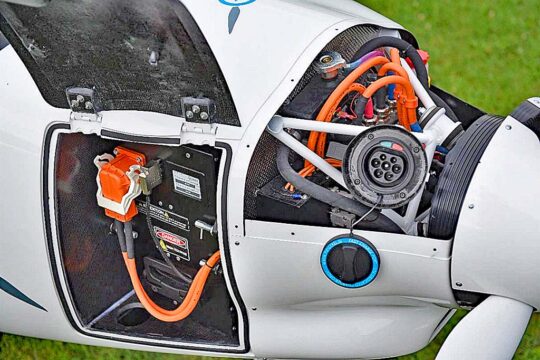 How long will the aircraft fly at cruise/cross-country? — Answer: "45 minutes at 18kW (reduced power) and 75 knots indicated airspeed"
How long does it typically take to charge the batteries with different chargers? — Answer: "Six hours with a 3kW charger; an hour forty with 10 kW charger; an hour and five minutes with a 14 kW; or 45 minutes with the 20 kW charger."
How heavy are the batteries and can I swap them myself? — Answer: "Each battery pack is 53 kg (117 pounds). Yes, you can remove the pack with no extra help."
What is the luggage capacity the aircraft? Answer: "There is no luggage compartment. Convenience luggage can be stored in the side pockets on the instrument panel."
How long will the aircraft fly at cruise/cross-country? — Answer: "45 minutes at 18kW (reduced power) and 75 knots indicated airspeed"
How long does it typically take to charge the batteries with different chargers? — Answer: "Six hours with a 3kW charger; an hour forty with 10 kW charger; an hour and five minutes with a 14 kW; or 45 minutes with the 20 kW charger."
How heavy are the batteries and can I swap them myself? — Answer: "Each battery pack is 53 kg (117 pounds). Yes, you can remove the pack with no extra help."
What is the luggage capacity the aircraft? Answer: "There is no luggage compartment. Convenience luggage can be stored in the side pockets on the instrument panel."
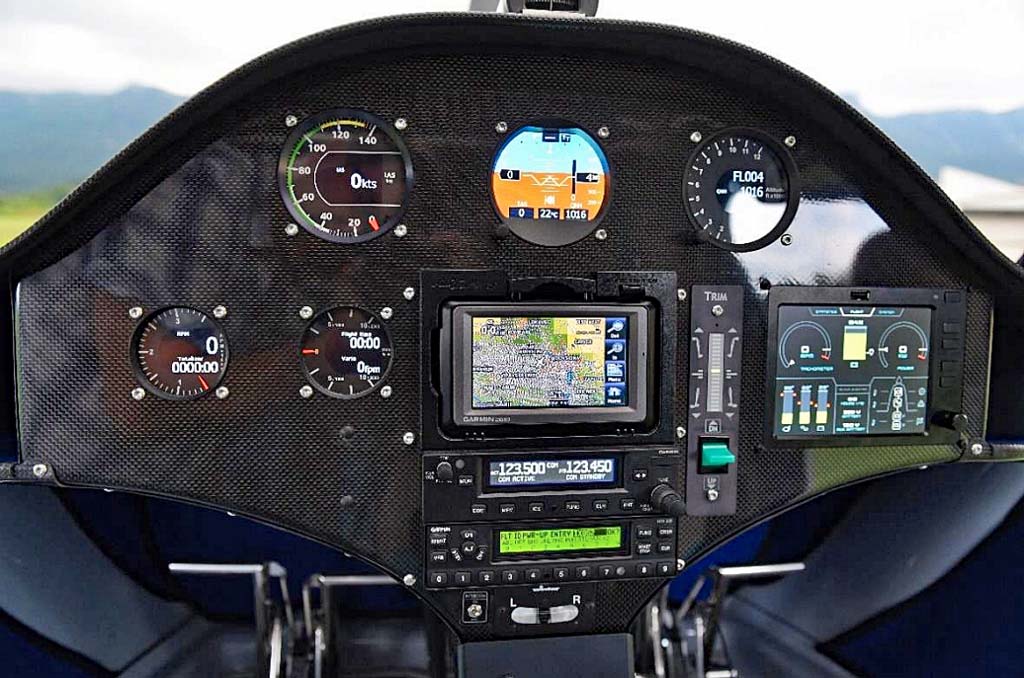
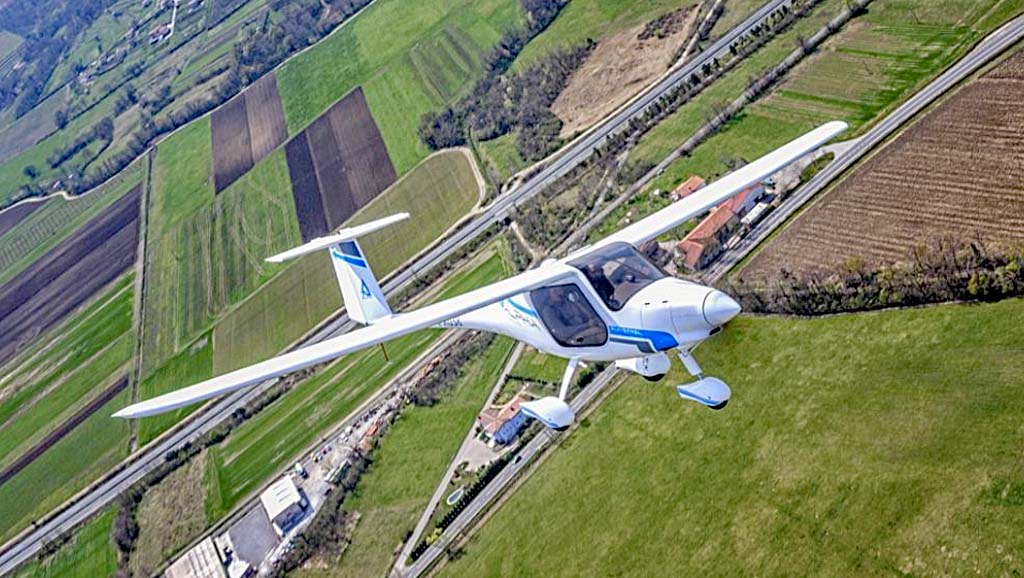
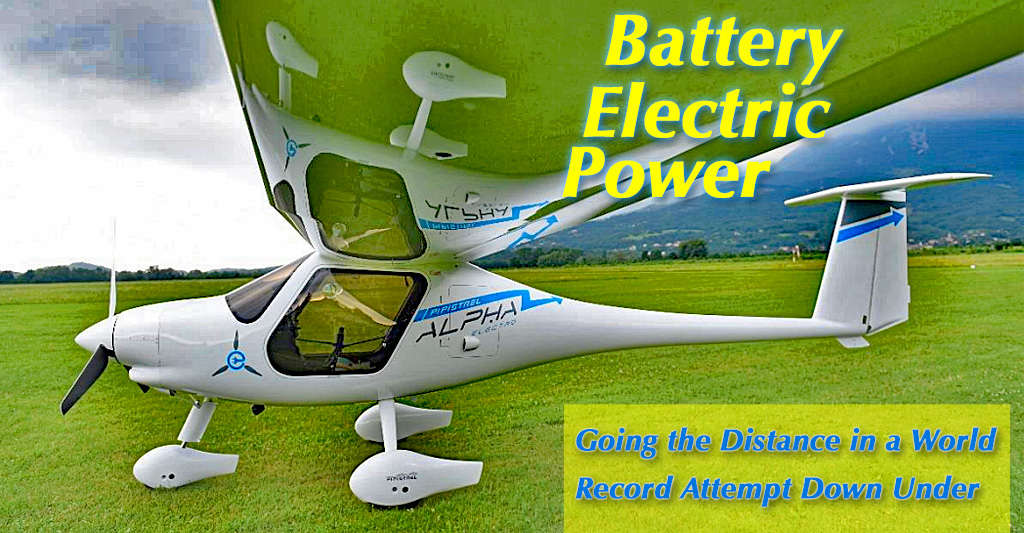
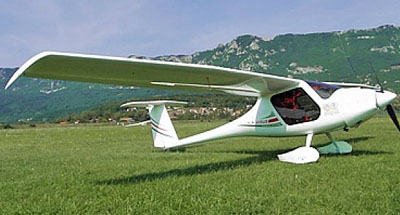 In the world of Light-Sport Aircraft, we have more than 90 manufacturers and 145 Special LSA (
In the world of Light-Sport Aircraft, we have more than 90 manufacturers and 145 Special LSA (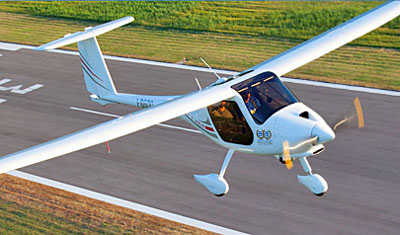 In Virus (yes, I've heard most the jokes about the name) Michael refers to the best seller of the comprehensive Pipistrel line. The reference here is to Virus SW. While the company has succeeded with a number of their other models, Virus SW — the shorter wing span and higher cruise speed variation — is the clear front runner among their production.
In Virus (yes, I've heard most the jokes about the name) Michael refers to the best seller of the comprehensive Pipistrel line. The reference here is to Virus SW. While the company has succeeded with a number of their other models, Virus SW — the shorter wing span and higher cruise speed variation — is the clear front runner among their production.
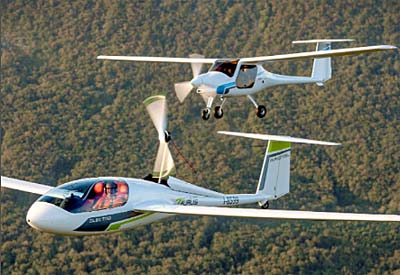 This particular airplane — nicknamed "Mahi" by its owners — is part of the WE! Expedition project, in which two female pilots, a mother and daughter, intend to fly around the world. Pipistrel will no doubt promote that voyage as they've done other global circumnavigation flights.
If you want to check out the Pipistrel line, you have a great chance coming soon.
"This year is going to be our biggest yet," boasted Coates, "with a strong emphasis on electric aircraft and virtual reality flight Training" He said his display will include the following:
This particular airplane — nicknamed "Mahi" by its owners — is part of the WE! Expedition project, in which two female pilots, a mother and daughter, intend to fly around the world. Pipistrel will no doubt promote that voyage as they've done other global circumnavigation flights.
If you want to check out the Pipistrel line, you have a great chance coming soon.
"This year is going to be our biggest yet," boasted Coates, "with a strong emphasis on electric aircraft and virtual reality flight Training" He said his display will include the following:
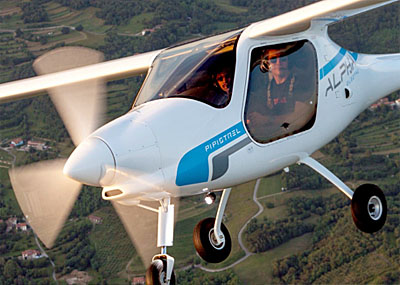 "We will also have 10,000 copies of the new Pipistrel Magazine available for giveaway," said Coates. "This magazine features the full history of Pipistrel along with the different projects we have been involved with in the past 30 years." Such company magazines used to be called "house organs" and Pipistrel's features information about the whole aircraft line.
Pipistrel was established in 1987 as a small backyard workshop and registered as a company in 1989. It started as a producer of powered hang-gliders, but in the 30 years of operation it has grown into an influential, internationally renown company
* A very common mistake is to refer to FAA accepted SLSA as "certified." This is incorrect. SLSA that FAA has approved have demonstrated compliance to ASTM standards and have verified their quality processes and best practices to FAA examiner's satisfaction. They may have proven this via an official FAA audit but they are not "type certified." TC aircraft get "Standard" Airworthiness Certificates. SLSA get "Special" AW Certs. Other countries that use ASTM standards as a basis for approval sometimes add their own "certifications."
"We will also have 10,000 copies of the new Pipistrel Magazine available for giveaway," said Coates. "This magazine features the full history of Pipistrel along with the different projects we have been involved with in the past 30 years." Such company magazines used to be called "house organs" and Pipistrel's features information about the whole aircraft line.
Pipistrel was established in 1987 as a small backyard workshop and registered as a company in 1989. It started as a producer of powered hang-gliders, but in the 30 years of operation it has grown into an influential, internationally renown company
* A very common mistake is to refer to FAA accepted SLSA as "certified." This is incorrect. SLSA that FAA has approved have demonstrated compliance to ASTM standards and have verified their quality processes and best practices to FAA examiner's satisfaction. They may have proven this via an official FAA audit but they are not "type certified." TC aircraft get "Standard" Airworthiness Certificates. SLSA get "Special" AW Certs. Other countries that use ASTM standards as a basis for approval sometimes add their own "certifications."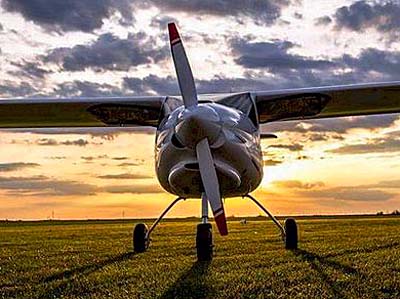 One bone of contention among LSA sellers is that legacy flight schools — the sort that typically uses Cessna or Piper trainers — sometimes disregard LSA as trainer aircraft. "They're built too lightly." "The nose wheels are too weak." "My mechanic doesn't know the Rotax engine." Some may have even more creative excuses.
I've interviewed many producers that are frustrated with this outdated response. Several have cited specific aircraft that have done flight school duty for thousands of hours and tens of thousands of landings.
Yet the ill-informed attitude of such school operators has not stopped sellers from trying. One such dogged entrepreneur is Michael Coates, the Australia-based largest dealer for Slovenian LSA producer,
One bone of contention among LSA sellers is that legacy flight schools — the sort that typically uses Cessna or Piper trainers — sometimes disregard LSA as trainer aircraft. "They're built too lightly." "The nose wheels are too weak." "My mechanic doesn't know the Rotax engine." Some may have even more creative excuses.
I've interviewed many producers that are frustrated with this outdated response. Several have cited specific aircraft that have done flight school duty for thousands of hours and tens of thousands of landings.
Yet the ill-informed attitude of such school operators has not stopped sellers from trying. One such dogged entrepreneur is Michael Coates, the Australia-based largest dealer for Slovenian LSA producer, 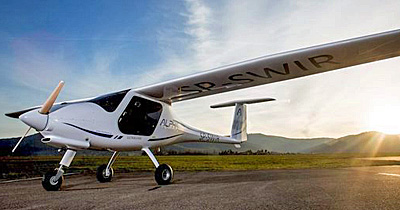 He referenced an order for 15 Pipistrel Alpha Trainer aircraft with instrumentation configured for IFR training (photo) ordered for delivery to San Bernardino, California.
He referenced an order for 15 Pipistrel Alpha Trainer aircraft with instrumentation configured for IFR training (photo) ordered for delivery to San Bernardino, California.
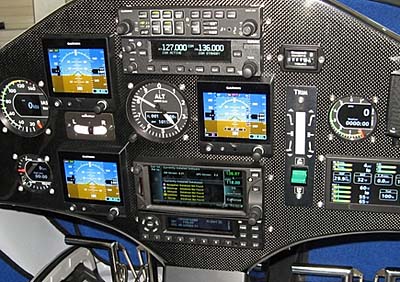 WWW considered SportCruiser, Tecnam, Skycatcher, Flight Design, Evektor, Pipistrel and a few others. "We leased and put some of these airplanes to work in our training environment,"
"This provided a very good understanding of their suitability in terms of safety, performance(s), maintenance, handling, durability, serviceability and up times," the school indicated. "Feedback from students was also very helpful."
Earlier, the Pipistrel factory sold 200 Alpha Trainers to the Indian military. "Their feedback on the aircraft durability was a consideration," observed WWW. Another factory affective the sales was a report of a Pipistrel Alpha Trainer in New Caledonia that recently surpassed 4,000 hours of training in a challenging tropical/marine environment; the aircraft has not reported problems.
Deliveries from Pipistrel's Italy production facility will start later this month, with delivery and commissioning in San Bernardino scheduled for the first week of June, 2018.
More than 300 Pipistrel Alpha Trainers have been produced and are flying in 35 countries including almost 50 in the USA alone, reported Coates.
WWW considered SportCruiser, Tecnam, Skycatcher, Flight Design, Evektor, Pipistrel and a few others. "We leased and put some of these airplanes to work in our training environment,"
"This provided a very good understanding of their suitability in terms of safety, performance(s), maintenance, handling, durability, serviceability and up times," the school indicated. "Feedback from students was also very helpful."
Earlier, the Pipistrel factory sold 200 Alpha Trainers to the Indian military. "Their feedback on the aircraft durability was a consideration," observed WWW. Another factory affective the sales was a report of a Pipistrel Alpha Trainer in New Caledonia that recently surpassed 4,000 hours of training in a challenging tropical/marine environment; the aircraft has not reported problems.
Deliveries from Pipistrel's Italy production facility will start later this month, with delivery and commissioning in San Bernardino scheduled for the first week of June, 2018.
More than 300 Pipistrel Alpha Trainers have been produced and are flying in 35 countries including almost 50 in the USA alone, reported Coates.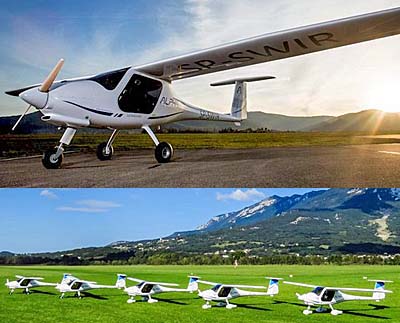
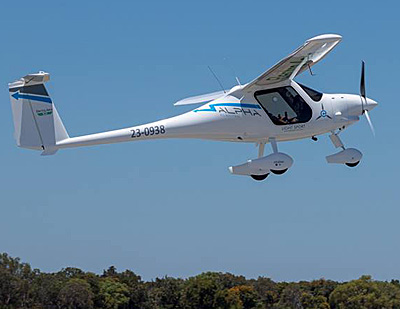
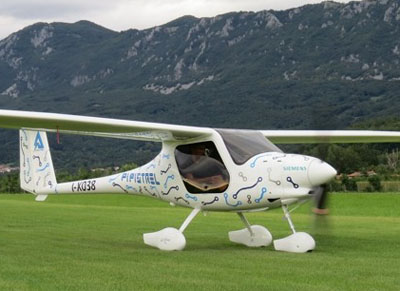 Regardless, FAA's word choice not only prevented turbine engines but unknowingly prevented electric propulsion as well. Few considered electric motors as powerplants in 2004 so FAA might be forgiven yet that one word "reciprocating" now turns out to be slowing progress.
More accurately, it slows things in the USA …but not in Australia or Canada, or many European countries, or China, or…
Agency staff admit they never intended to preclude electric but "now it's the regulation and we can't change it without a major effort." (
Regardless, FAA's word choice not only prevented turbine engines but unknowingly prevented electric propulsion as well. Few considered electric motors as powerplants in 2004 so FAA might be forgiven yet that one word "reciprocating" now turns out to be slowing progress.
More accurately, it slows things in the USA …but not in Australia or Canada, or many European countries, or China, or…
Agency staff admit they never intended to preclude electric but "now it's the regulation and we can't change it without a major effort." (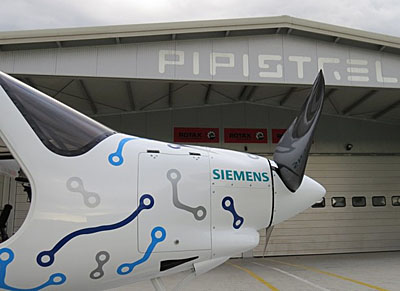 This Alpha Electro "is a normal production Pipistrel
This Alpha Electro "is a normal production Pipistrel 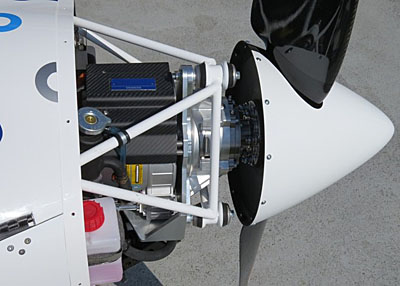 As Rob reported, "Electro is powered by a 60-kW electric motor equivalent to an 80-horsepower gasoline engine. Roughly the size of a Cessna 150, the Alpha Electro weighs considerably less, just over 1,200 pounds. At cruise, Electro tops out at 85 mph."
The Southern Hemisphere flight school got a rush of news coverage in Australia. Here's a series or reports that also shows the aircraft in flight. You can hear it as well.
https://youtu.be/xPN5VDHzPNo
As Rob reported, "Electro is powered by a 60-kW electric motor equivalent to an 80-horsepower gasoline engine. Roughly the size of a Cessna 150, the Alpha Electro weighs considerably less, just over 1,200 pounds. At cruise, Electro tops out at 85 mph."
The Southern Hemisphere flight school got a rush of news coverage in Australia. Here's a series or reports that also shows the aircraft in flight. You can hear it as well.
https://youtu.be/xPN5VDHzPNo